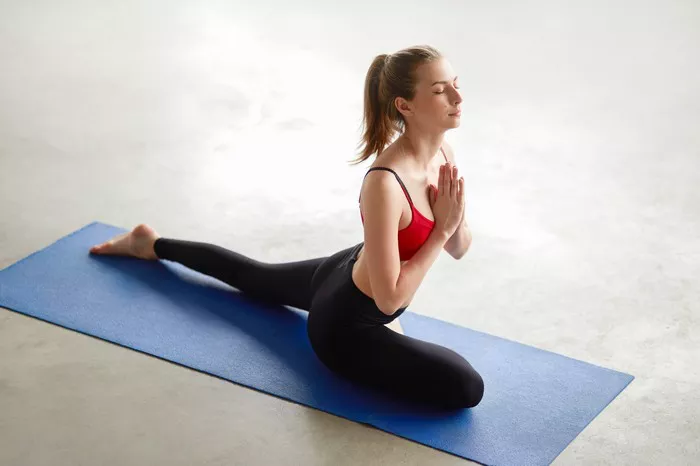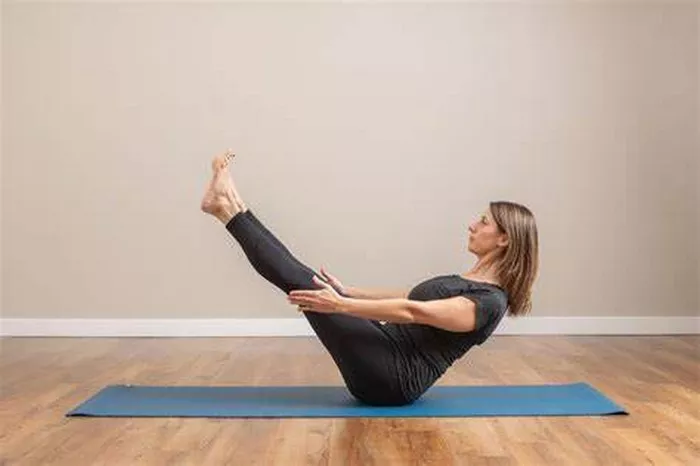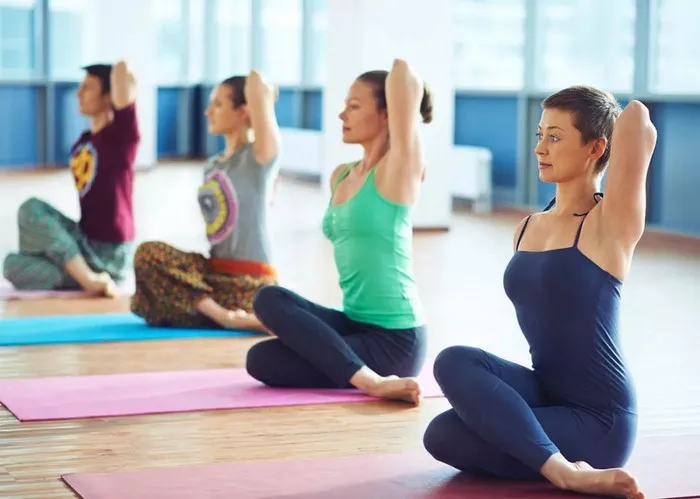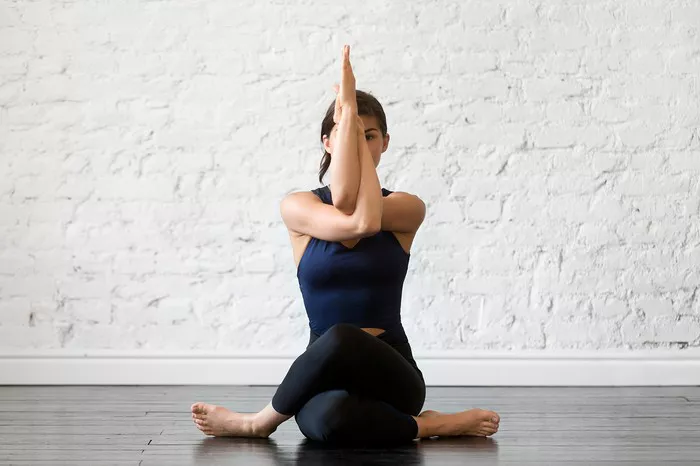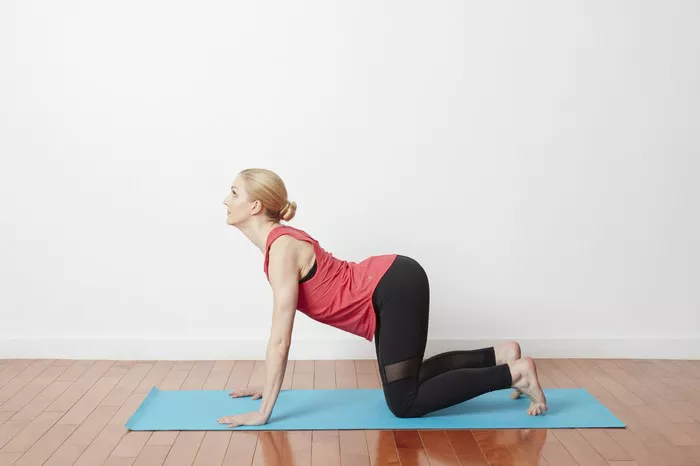Yoga is a practice that intertwines the physical, mental, and spiritual aspects of our being. It’s a journey of self-discovery and growth, often drawing inspiration from the world around us, including the grace and strength of animals. Incorporating animal-named poses into your yoga practice not only adds a playful element but also deepens your connection to nature and your own body. In this article, we delve into the top 10 yoga poses inspired by animals, exploring their benefits and the symbolism they carry.
1. Downward-Facing Dog (Adho Mukha Svanasana)
One of the most iconic yoga poses, Downward-Facing Dog mimics the stretch and relaxation of a dog stretching itself out after a nap. This pose stretches the entire body, particularly the hamstrings, calves, shoulders, and spine. It also strengthens the arms and legs while rejuvenating the mind by increasing blood flow to the brain.
2. Cat-Cow Stretch (Marjaryasana-Bitilasana)
The Cat-Cow Stretch embodies the fluid movements of a cat arching its back and a cow extending its spine. This gentle flow helps warm up the spine, increase flexibility, and release tension in the back, neck, and shoulders. It promotes awareness of breath and encourages a sense of balance and harmony within the body.
3. Cobra Pose (Bhujangasana)
Channeling the grace and power of a cobra, this backbend pose stretches the chest, shoulders, and abdomen while strengthening the spine, arms, and shoulders. Cobra Pose opens the heart center, stimulating circulation and improving posture. It also invigorates the digestive organs, fostering a sense of vitality and inner strength.
4. Eagle Pose (Garudasana)
Eagle Pose embodies the poise and focus of an eagle in flight. This balancing pose strengthens the legs, ankles, and calves while improving concentration and stability. By crossing the arms and legs in a twist, it stimulates the lymphatic system, enhancing detoxification and boosting energy levels. Eagle Pose cultivates mental clarity and resilience, empowering practitioners to soar with grace and confidence.
5. Dolphin Pose (Ardha Pincha Mayurasana)
Dolphin Pose mirrors the fluid motion of a dolphin gliding through water. This inversion pose strengthens the arms, shoulders, and core muscles while lengthening the spine and hamstrings. By encouraging blood flow to the brain, Dolphin Pose improves focus and relieves stress and anxiety. It also stimulates the digestive organs, promoting detoxification and rejuvenation.
6. Frog Pose (Mandukasana)
Frog Pose mimics the crouched position of a frog, promoting hip opening and inner thigh stretching. This pose improves flexibility in the groin and hips, alleviating stiffness and discomfort. Frog Pose also stimulates the abdominal organs, aiding digestion and elimination. By surrendering to gravity in this grounding posture, practitioners cultivate patience and acceptance, embracing the present moment with ease.
7. Crow Pose (Bakasana)
Crow Pose embodies the lightness and agility of a crow perched on a branch. This arm balance pose strengthens the wrists, arms, and core muscles while improving balance and concentration. Crow Pose requires focus and determination, encouraging practitioners to overcome fear and self-doubt. By mastering this challenging pose, individuals develop resilience and confidence, soaring to new heights in their practice and in life.
8. Camel Pose (Ustrasana)
Camel Pose reflects the graceful arch of a camel’s back, opening the heart and stretching the entire front body. This backbend pose improves posture, flexibility, and digestion while relieving tension in the neck and shoulders. Camel Pose also stimulates the thyroid and parathyroid glands, regulating metabolism and calcium balance. By surrendering to vulnerability in this heart-opening posture, practitioners cultivate courage and compassion, embracing the full spectrum of emotions with grace.
9. Pigeon Pose (Kapotasana)
Pigeon Pose mirrors the relaxed posture of a pigeon perched on a windowsill, stretching the hips, glutes, and lower back. This hip opener releases tension and emotional stress stored in the pelvis, promoting a sense of grounding and emotional release. Pigeon Pose also stimulates the abdominal organs, aiding digestion and elimination. By surrendering to discomfort in this deep stretch, practitioners cultivate resilience and acceptance, finding peace and serenity within.
10. Fish Pose (Matsyasana)
Fish Pose embodies the fluidity and grace of a fish swimming through water, arching the spine and opening the heart. This backbend pose stretches the chest, throat, and abdomen while stimulating the thyroid and parathyroid glands. Fish Pose improves posture, relieves respiratory ailments, and invigorates the entire body. By surrendering to vulnerability in this heart-opening posture, practitioners cultivate compassion and self-love, embracing their true essence with courage and authenticity.
Conclusion
Incorporating animal-named poses into your yoga practice offers a playful yet profound way to connect with nature and your own inner wisdom. Whether you’re embodying the strength of a cobra, the grace of an eagle, or the surrender of a fish, each pose invites you to explore the depths of your being with mindfulness and compassion. As you flow through these animal-inspired postures, may you find harmony, balance, and joy in body, mind, and spirit.
FAQs:
Which asanas are named after insects?
Asanas named after insects include Bhujangasana (Cobra Pose), which mimics a cobra’s stance, and Shalabhasana (Locust Pose), resembling a locust’s posture. Both poses are integral to yoga practice, offering benefits such as spinal flexibility and strengthening the back muscles.
Is there a kangaroo yoga pose?
While there isn’t a specific yoga pose named after a kangaroo, there are poses that evoke the qualities of a kangaroo, such as Utkatasana (Chair Pose), which requires squatting with the arms raised, resembling a kangaroo’s posture while hopping.
Which asana is named after the fish?
Matsyasana (Fish Pose) is the asana named after the fish. In this pose, the practitioner lies on their back and arches their chest upward, resembling the shape of a fish leaping out of water. Matsyasana is known for its ability to stretch the chest, neck, and shoulders, as well as stimulating the throat and heart chakras.

